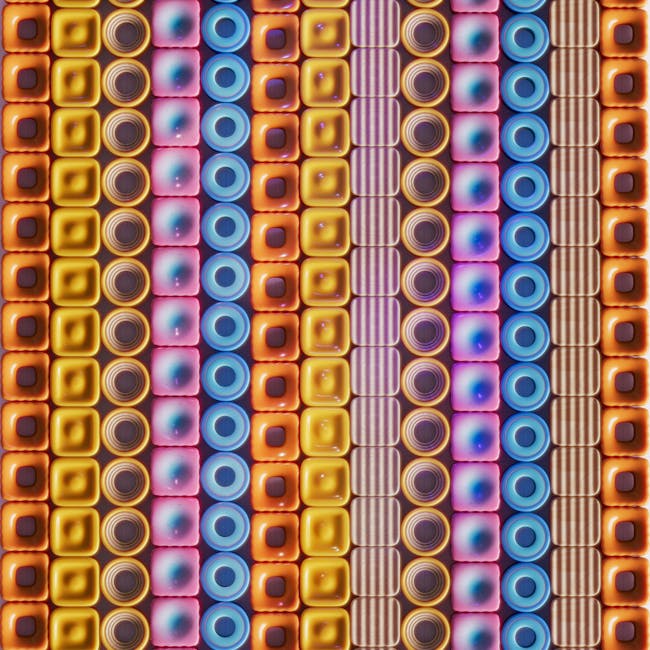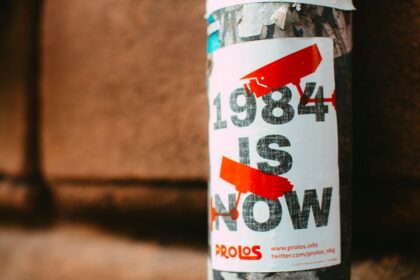Creative That Converts: Crafting High-Performing YouTube Video Ads
Understanding the YouTube Ad Ecosystem and Audience Psychology
YouTube stands as an unparalleled platform for video advertising, not merely due to its colossal user base of over two billion monthly logged-in users, but primarily because of its unique position in the digital content landscape. Unlike search engines where users actively seek information, or social media where content is often passively consumed, YouTube users engage with a blend of active search for specific content (tutorials, product reviews) and leaning-back entertainment (vlogs, series, music videos). This dual mindset presents both opportunities and challenges for advertisers. Users on YouTube are inherently open to video content, making the medium a natural fit for conveying messages through sight, sound, and motion. However, this also means they have a high expectation for quality and relevance. The core challenge is to ensure your ad, whether an interruption or an invited interaction, seamlessly integrates into or elevates their viewing experience rather than detracting from it.
The platform offers a diverse array of ad formats, each with distinct characteristics and optimal use cases. Skippable in-stream ads, the most common type, appear before, during, or after videos, allowing users to skip after five seconds. This format emphasizes the critical importance of a compelling hook within those initial seconds to capture attention before the skip button becomes irresistible. Non-skippable in-stream ads, typically 15 seconds or less, command full viewer attention, making every frame count for high-impact messaging. Bumper ads, just six seconds long, are concise, memorable bursts ideal for brand awareness and recall. Outstream ads appear on partner websites and apps, playing automatically without sound, serving a broader reach beyond YouTube itself. Lastly, Masthead ads, premium placements on the YouTube homepage, offer unparalleled visibility for a day, suited for massive reach and brand launches. Understanding these formats is fundamental, as each dictates specific creative approaches, pacing, and calls to action.
The inherently “interruptive” nature of many YouTube ad formats means that superior creative is not merely a bonus, but an absolute necessity for conversion. Unlike organic content that users choose to watch, an ad often intrudes upon their desired viewing experience. This necessitates a profound understanding of audience psychology. Viewers are constantly making micro-decisions: “Is this worth my time?” “Does this offer me value?” “Should I skip this?” Their cognitive load is influenced by decision fatigue, the sheer volume of information they process daily, and recency bias, where the most recently viewed content often holds more sway. A well-crafted ad leverages principles of attention and persuasion, cutting through the noise with clarity and relevance. It taps into emotional triggers, addresses felt needs, and offers immediate perceived value. Moreover, audience segmentation and targeting capabilities on YouTube allow advertisers to reach highly specific groups based on demographics, interests, custom intent audiences (people searching for specific keywords), in-market audiences (people actively researching products), and even life events. This precision targeting empowers creative teams to tailor messages with remarkable specificity, making the ad feel less like an interruption and more like a helpful suggestion. The creative must resonate deeply with these targeted segments, speaking their language and addressing their unique pain points.
Strategic Foundations: Defining Goals and Understanding Your Audience
Before a single frame of video is shot or an animation rendered, the bedrock of a high-performing YouTube video ad campaign lies in meticulous strategic planning. This pre-production phase is critical for defining success metrics and ensuring every creative decision aligns with overarching business objectives. The very first step is to clarify your campaign goals. Are you aiming for broad brand awareness, generating qualified leads, driving direct sales, encouraging app installs, or re-engaging past visitors? Each objective demands a distinctly different creative approach, message, and call to action. For instance, a brand awareness campaign might prioritize emotional connection, memorable visuals, and high production value, focusing on brand recall metrics. Conversely, a direct sales campaign will lean heavily on a clear problem-solution narrative, strong benefits, irresistible offers, and an immediate, unambiguous call to purchase.
Adopting the SMART (Specific, Measurable, Achievable, Relevant, Time-bound) framework for goal setting is invaluable. Instead of a vague “increase sales,” a SMART goal would be “achieve 100 new product sales from YouTube ads within 30 days at a Cost Per Acquisition (CPA) of $50.” This specificity provides a tangible target and allows for precise measurement of creative effectiveness. Without clear, measurable goals, evaluating the performance of your creative becomes subjective and difficult to optimize.
A deep dive into target audience personas is equally paramount. Beyond basic demographics like age and location, true understanding requires delving into their psychographics: their pain points, desires, motivations, aspirations, fears, and daily online behaviors. What problems do they face that your product or service solves? What are their preferred communication styles? Where else do they spend their time online? What content do they typically consume on YouTube? Crafting detailed personas allows the creative team to empathize with the audience, anticipate their objections, and design an ad that genuinely resonates. For example, an ad targeting busy parents might emphasize time-saving benefits, while an ad for tech enthusiasts would focus on innovative features and performance. Understanding the emotional drivers behind their purchasing decisions is often more powerful than listing factual specifications.
Competitor analysis also plays a crucial role in shaping your creative strategy. By observing what your competitors are doing in their video ads – what kind of hooks they use, their storytelling methods, their CTAs, their production quality – you can identify both effective tactics to emulate and common pitfalls to avoid. More importantly, it helps you identify opportunities to differentiate your creative. What unique angle can you take? How can your brand voice stand out in a crowded market? The goal isn’t to copy, but to learn, adapt, and innovate to create a superior ad experience that captures your audience’s attention more effectively.
Ultimately, the most critical strategic foundation is crystal-clear value proposition clarity. What unique problem do you solve for your audience, and why should they choose you over alternatives? This single-minded proposition must be distilled into the core message of your video ad. Every element – from the initial hook to the final call to action – should reinforce this central message. Avoid the temptation to cram too many features or benefits into one ad. A confused message leads to a confused audience, and a confused audience rarely converts. Focus on one compelling benefit or one urgent problem that your solution elegantly addresses. This strategic rigor ensures that your creative efforts are not just aesthetically pleasing, but profoundly purposeful, driving the desired actions and delivering a measurable return on investment.
The Anatomy of a High-Converting YouTube Ad Creative
The conversion success of a YouTube video ad is not accidental; it’s a meticulously engineered outcome, built upon a series of interconnected elements designed to capture, engage, and persuade. Understanding the anatomy of such an ad is critical for effective creative development.
The Hook (First 5 seconds): This is arguably the single most important element of a skippable in-stream ad. Viewers form an almost instantaneous decision within these crucial moments: to continue watching or to skip. The hook must be potent, relevant, and disruptive. Various types of hooks can be employed:
- Problem/Solution Hook: Immediately articulate a common pain point the audience experiences, then hint at your solution. “Tired of slow internet?”
- Curiosity Hook: Pose an intriguing question or show something unexpected. “You won’t believe what happened next…” or a visually striking, unusual scene.
- Direct Question Hook: Directly address the viewer with a question relevant to their needs or desires. “Are you struggling to get enough sleep?”
- Shock/Surprise Hook: Use a dramatic visual, sound, or statistic to grab attention. “Did you know 90% of businesses fail within their first year?”
- Value Proposition Hook: State your core benefit immediately. “Save 30% on your energy bill starting today.”
- Benefit-Oriented Hook: Focus on the outcome for the user. “Unlock your creative potential with this simple tool.”
The key is to create an immediate connection, promising relevance or intrigue that outweighs the desire to skip. This often means foregoing traditional branding or slow introductions in favor of immediate value or intrigue.
Storytelling Arc: Humans are wired for stories. A compelling narrative transforms an ad from a mere commercial into an engaging piece of content. While not every ad needs a complex narrative, structuring your message with a clear arc can significantly improve engagement. Popular frameworks include:
- Problem-Agitation-Solution (PAS): Identify a problem, agitate the pain caused by that problem, then present your product as the definitive solution. This is highly effective for direct response.
- The Hero’s Journey: While often too complex for short ads, the essence can be applied: introduce a relatable “hero” (your audience), show their struggle, present your product as the guide/tool to overcome it, and depict their success.
- Testimonial Narrative: Let a satisfied customer tell their story of how your product solved their problem. This builds immense trust.
Regardless of the framework, the goal is emotional resonance. People remember how you made them feel, not just what you told them.
Problem Identification & Agitation: After the hook, it’s vital to elaborate on the problem your audience faces. This validates their experience and creates empathy. Don’t just state the problem; agitate it. Show the frustration, the lost opportunities, the daily struggles caused by this problem. This deepens the emotional connection and makes your audience feel truly understood. The more acutely they feel the pain you describe, the more receptive they will be to your solution. Use relatable scenarios, relatable language, and visuals that underscore the problem’s impact.
Solution & Benefit Showcase: Once the problem is thoroughly agitated, present your product or service as the clear, elegant solution. Crucially, focus on benefits, not just features. Features are what your product has (e.g., “12-megapixel camera”); benefits are what your product does for the customer (e.g., “capture breathtakingly clear photos even in low light, so your memories truly shine”). Translate every feature into a tangible advantage for the user. Show, don’t just tell. Demonstrate the product in action, visually depicting how it solves the identified problem and improves the user’s life. Use clear, concise language to articulate these benefits.
Credibility & Trust Signals: In a world saturated with advertising, trust is a precious commodity. High-converting ads proactively build credibility. Incorporate:
- Testimonials: Authentic quotes or video clips from satisfied customers. These are incredibly powerful social proof.
- Statistics & Data: Quantifiable results from studies or usage. “95% of users reported improved sleep.”
- Expert Endorsements: If applicable, leverage recognized figures in your industry.
- Awards & Recognitions: Display industry accolades.
- Social Proof: Mentioning large user bases (“trusted by over 1 million users”) or media mentions.
- Guarantees: Money-back guarantees or satisfaction promises reduce perceived risk.
These elements assure the viewer that your solution is legitimate and effective, overcoming potential skepticism.
Call to Action (CTA): The CTA is the single most critical element for conversion. It must be:
- Single: Avoid multiple CTAs. Direct the viewer to one specific action.
- Clear: Leave no ambiguity about what you want them to do. “Learn More,” “Shop Now,” “Download App,” “Get a Free Quote.”
- Prominent: Visually and verbally undeniable. On-screen text, clear voiceover.
- Urgent (optional but effective): Create a sense of immediacy. “Limited Time Offer,” “While Supplies Last,” “Act Now.”
- Repeated: Often, the CTA is presented verbally and visually at least twice, especially towards the end of the ad.
The placement of the CTA is crucial. While a final CTA is standard, for longer ads, a soft CTA might appear earlier to prime the viewer, or even a clickable overlay throughout to capture impulse clicks. The most powerful CTAs address a specific desire or solve a final objection. For example, instead of just “Click Here,” try “Click Here to Claim Your Free Trial” or “Click Here to Start Saving Today.” Make it incredibly easy for the viewer to take the next step.
Visual and Audio Elements: Crafting Engagement
The quality of your creative’s visual and audio components directly correlates with its ability to engage and convert. YouTube is a visual platform, and poor production quality can undermine even the most brilliant message.
Visual Storytelling: High-quality footage is non-negotiable. This means sharp focus, appropriate lighting (natural light is often best, but professional lighting setups are invaluable), and thoughtful composition. Every frame should contribute to the narrative or reinforce the message. Avoid shaky cam, poor resolution, or distracting backgrounds. The visuals should be aesthetically pleasing and align with your brand’s identity and the emotions you want to evoke. For example, a luxury product ad demands sleek, high-definition visuals, while a product for everyday use might benefit from a more relatable, authentic look. Use varied shot types (close-ups, wide shots, medium shots) to maintain visual interest and convey different information.
Branding: Consistent branding throughout your ad is crucial for recognition and recall. Ensure your logo is visible, but not intrusive. Incorporate your brand colors, fonts, and overall aesthetic. This creates a cohesive experience and reinforces your brand identity, making it easier for viewers to remember who is speaking to them and associate the benefits presented with your company. Subtlety often works best – integrate branding organically rather than slapping a large logo on every frame. The end screen is an ideal place for prominent branding and a strong logo presence.
On-Screen Text & Graphics: Many YouTube users watch videos with sound off, especially on mobile devices or in public settings. Therefore, incorporating clear, concise on-screen text and graphics is vital. This text can reinforce key messages, display statistics, highlight benefits, or simply provide subtitles for dialogue. Use legible fonts, appropriate sizes, and contrasting colors to ensure readability against your video background. Graphics can also be used to explain complex concepts, animate data, or highlight specific product features in an engaging way. Keep text brief and impactful – don’t copy your script verbatim onto the screen.
Pacing & Editing: The rhythm of your ad directly impacts engagement. Dynamic cuts, especially in the crucial first few seconds, can grab and hold attention. Avoid long, static shots unless they serve a specific artistic or narrative purpose. The editing should be seamless and logical, guiding the viewer smoothly through your message. Avoid “dead air” or awkward pauses. For short-form ads like bumpers, rapid-fire editing is often effective. For longer, more narrative ads, varying the pace can maintain interest – building tension, then releasing it, for example. The goal is to keep the viewer entertained and informed without feeling rushed or bored.
Audio Quality: Clear, professional audio is just as important as high-quality visuals, if not more so, for conveying information and building trust. Poor audio (muffled speech, background noise, inconsistent volume) is a common reason viewers disengage. Ensure voiceovers are crisp and articulate, music is balanced and appropriate, and sound effects enhance the viewing experience without distracting from the main message. Invest in good microphones and proper sound mixing.
Music Selection: Music sets the mood, conveys emotion, and influences the viewer’s perception of your brand. Choose music that aligns with your brand identity and the message of the ad. Upbeat music for energetic product launches, calm music for meditation apps, or dramatic scores for problem-solution narratives. Always use royalty-free music or licensed tracks to avoid copyright issues. The volume of the music should complement, not overpower, the voiceover or dialogue. The right music can elevate your ad from good to great, enhancing emotional resonance and memorability.
Voiceover/Narrator: If your ad includes a voiceover, the narrator’s voice should be professional, trustworthy, and engaging. Consider the tone: authoritative, friendly, enthusiastic, calm. The voice should be clear, well-articulated, and convey confidence. For direct response ads, a clear, persuasive voice can significantly impact conversion rates. Sometimes, a natural, authentic voice of a real person (e.g., a founder, a customer) can be more impactful than a generic professional voiceover. The choice should always align with your brand’s personality and the ad’s objective.
Technical Considerations & Ad Formats
Beyond creative conceptualization, understanding the technical specifications and nuances of YouTube’s various ad formats is crucial for ensuring your creative is displayed optimally and reaches its full potential. Ignoring these details can lead to pixelated videos, cutoff text, or simply ineffective delivery.
Video Specifications:
- Aspect Ratios: YouTube supports various aspect ratios, and choosing the right one can significantly impact performance, especially on mobile.
- 16:9 (Landscape): The traditional widescreen format, ideal for desktop and TV screens. Most standard video content is produced in this ratio.
- 9:16 (Vertical): Increasingly popular for mobile-first content, mirroring formats seen on platforms like TikTok and Instagram Reels. Highly effective for capturing attention on smartphones where users often hold their devices vertically.
- 1:1 (Square): A versatile format that works well across various placements, including mobile feeds and discovery surfaces. It can be a good compromise for ads needing to perform well on both desktop and mobile.
- Resolution: Always aim for the highest possible resolution, preferably 1080p (Full HD) as a minimum. 4K resolution is even better for maximum clarity, especially on larger screens. Lower resolutions can make your ad appear unprofessional and pixelated, leading to lower engagement.
- File Size: While YouTube handles compression, keeping your source file size reasonable helps with upload times and initial processing.
- Codec: YouTube recommends H.264 for video compression and AAC for audio. These codecs ensure optimal quality and compatibility across devices.
- Frame Rate: Maintain a consistent frame rate, typically 24, 25, 30, 48, 50, or 60 frames per second (fps). Matching the original recording frame rate is ideal.
Ad Lengths: The optimal length of your ad is heavily dictated by its format and objective.
- Skippable In-Stream Ads (TrueView In-Stream): While they can theoretically be any length, viewers can skip after 5 seconds. This makes the first 5 seconds critically important. Many advertisers find 15-30 seconds to be an optimal length for delivering a full message before ad fatigue sets in, though successful ads can run longer if they maintain high engagement. The goal is to provide enough value or intrigue to discourage a skip.
- Non-Skippable In-Stream Ads: Limited to 15 seconds (or 20 seconds in some regions). These demand highly condensed, impactful messaging. Every second must be optimized for maximum information delivery and brand impression. They are excellent for brand awareness and quick, memorable messaging.
- Bumper Ads: Exactly 6 seconds long and non-skippable. These are ideal for short, punchy messages, brand recall, or to tease a larger campaign. They excel at driving frequency and top-of-funnel awareness.
- Outstream Ads: These ads appear on Google video partners’ websites and apps, outside of YouTube. They are designed for mobile environments and play automatically with sound off (users can tap to enable sound). They can be up to 30 seconds but are often shorter to maintain engagement. Focus on strong visuals and on-screen text as sound is not guaranteed.
- Masthead Ads: These premium, reservation-based ads appear prominently at the top of the YouTube homepage. They are up to 30 seconds for desktop and 90 seconds for mobile (though typically shorter). They autoplay without sound for a few seconds before becoming clickable. They are designed for massive reach and brand launches, requiring highly impactful, high-production-value creative.
Thumbnails: For TrueView Discovery ads (ads appearing in YouTube search results, next to related videos, or on the mobile homepage) and organic suggested videos, the thumbnail is paramount. It acts as the first visual impression and often determines whether a user clicks to watch your ad. A compelling thumbnail should be high-resolution, visually striking, relevant to the video content, and ideally feature a clear, engaging subject or text overlay that piques curiosity. Avoid generic or blurry images. Think of it as a mini-billboard.
Companion Banners: For in-stream ads, companion banners (static image or rich media ads) appear next to the video on desktop. These offer additional visual real estate to reinforce your message, display your logo, or provide another clickable element. They are a valuable, often underutilized, asset to extend your ad’s reach and provide continuous brand presence. Ensure they are visually consistent with your video creative.
End Screens: While not an ad format in themselves, end screens are crucial interactive elements within your video. For YouTube ads, this typically means a clear, prominent call to action. In organic content, end screens can link to other videos, playlists, or channel subscriptions. In ads, they provide a final opportunity for the viewer to take action, such as visiting your website or signing up. Ensure your video design accommodates a final clear CTA slide with clear branding and a direct, singular instruction.
By meticulously adhering to these technical requirements and strategically choosing the appropriate ad format and length, you ensure your creative is not just compelling, but also perfectly optimized for YouTube’s vast and varied viewing environments, maximizing its potential for conversion.
YouTube Ad Creatives: Specific Strategies for Different Objectives
The “best” YouTube ad creative is not a one-size-fits-all solution; it’s a strategic adaptation of storytelling and visual elements to align with specific campaign objectives. Different marketing funnels demand distinct creative approaches.
Brand Awareness:
When the primary goal is to increase brand recognition and recall, the creative should focus on building an emotional connection and telling a compelling brand story.
- Creative Focus: High production value, visually stunning cinematography, memorable jingles or slogans, emotional narratives, and clear brand messaging. The ad aims to create a positive association with the brand.
- Message: What is your brand’s essence? What does it stand for? What emotions do you want to evoke? Focus on values, lifestyle, or the aspirational aspects of your brand.
- Ad Formats: Non-skippable in-stream ads (15-20 seconds) for guaranteed impressions, bumper ads (6 seconds) for high frequency and memorability, and Masthead ads for maximum reach and impact during launches. Skippable ads can also work if the hook is incredibly strong and the brand message is integrated early.
- Metrics: Brand recall, unique reach, impressions, view-through rate (VTR), brand lift studies (ad recall, brand awareness, consideration).
- Example: A car manufacturer showing breathtaking landscapes with their vehicle, accompanied by an uplifting soundtrack, without a direct sales pitch. A beverage company showcasing people enjoying their drink in social, joyful settings.
Lead Generation/Sales (Direct Response):
For campaigns focused on acquiring leads or driving immediate sales, the creative must be highly persuasive and action-oriented.
- Creative Focus: Clear problem identification and agitation, explicit solution demonstration, strong benefit-oriented language, urgency, social proof (testimonials, data), and a single, prominent call to action.
- Message: “Here’s your problem, here’s how our product solves it, and here’s why you should act now.” The value proposition is front and center.
- Ad Formats: Skippable in-stream ads are common, allowing for longer narratives that build persuasion. However, the first 5-10 seconds are still crucial.
- Metrics: Conversion rate (leads, purchases), Cost Per Conversion (CPC), Click-Through Rate (CTR), Return on Ad Spend (ROAS).
- Example: A software company demonstrating how their tool streamlines a specific business process, followed by testimonials from users, and ending with a “Start Your Free Trial Now” button. An e-commerce brand showcasing a product solving a common household issue, with a limited-time discount and “Shop Now” CTA.
App Installs:
The objective here is to drive users directly to an app store to download an application.
- Creative Focus: Clearly show the app in action, highlight its key features and unique value proposition, and demonstrate how it solves a user problem or enhances their life. Make the app experience look desirable and intuitive.
- Message: “Download this app to [achieve benefit] and [solve problem].”
- Ad Formats: Skippable in-stream ads are effective for showing app functionality. App install campaigns also leverage specific app campaign formats within Google Ads that optimize for installs.
- Metrics: App installs, Cost Per Install (CPI), in-app engagement (post-install actions).
- Example: A gaming app ad showing exciting gameplay footage, emphasizing unique mechanics, and ending with a clear “Download on App Store / Google Play” button. A productivity app ad demonstrating how its features simplify daily tasks.
Retargeting:
This strategy targets users who have previously interacted with your brand (visited your website, watched a previous ad, added to cart). The creative should acknowledge their prior interest and offer a compelling reason to convert.
- Creative Focus: Tailored messages addressing specific objections, special offers (discounts, free shipping), reminders of value, showcasing relevant product categories, or cross-selling related items.
- Message: “Remember us? Here’s why you should come back / finish your purchase.” Or, “You liked X, you’ll love Y.”
- Ad Formats: Skippable in-stream ads work well due to their flexibility in length, allowing for personalized messaging.
- Metrics: Conversion rate (for specific retargeted actions), reduced CPA.
- Example: An ad showing a customer’s abandoned shopping cart with a friendly reminder and a small discount code. An ad for someone who watched a product review, now showing testimonials of happy owners.
UGC (User-Generated Content) Ads:
Leveraging authentic content created by your customers.
- Creative Focus: Raw, unpolished footage of real people using and enjoying your product. Emphasizes authenticity, relatability, and trust. Can include reviews, unboxings, or creative uses of the product.
- Message: “Don’t just take our word for it, see what our customers say!”
- Ad Formats: Skippable in-stream.
- Metrics: High engagement, trust, conversion.
- Example: A compilation of TikTok-style reviews from various customers, showcasing different features or benefits.
Explainer Videos:
Designed to simplify complex products, services, or concepts.
- Creative Focus: Clear, concise animations or live-action demonstrations breaking down a process or product functionality step-by-step. Often uses a friendly narrator and helpful on-screen text.
- Message: “Understand how X works and how it benefits you.”
- Ad Formats: Skippable in-stream.
- Metrics: Watch time, click-through to learn more, lead generation.
- Example: An animated video explaining how a new financial product simplifies investments, using metaphors and simple visuals.
Demonstration Videos:
Showcases a product’s features and benefits through practical usage.
- Creative Focus: Real-time demonstration of the product in action, highlighting key features and problem-solving capabilities. Often includes before-and-after scenarios.
- Message: “See our product in action and discover its power.”
- Ad Formats: Skippable in-stream.
- Metrics: Click-through to product pages, sales.
- Example: A cooking gadget ad showing how it quickly chops vegetables or performs a complex culinary task with ease.
By aligning your creative strategy with your specific campaign objective, you ensure that every aspect of your YouTube video ad is designed to drive the desired action, maximizing your advertising investment.
A/B Testing and Optimization: The Scientific Approach to Conversion
Creating high-performing YouTube video ads is not a one-time creative endeavor; it’s an ongoing, iterative process driven by data and continuous refinement. A/B testing, also known as split testing, is the cornerstone of this optimization, allowing advertisers to systematically compare different creative elements and identify which versions resonate most effectively with their target audience, ultimately leading to higher conversion rates and improved ROI.
Why Test?
The fundamental reason to test is to eliminate assumptions. What you think will work, or what worked for another brand, may not work for yours. A/B testing provides empirical evidence, revealing what truly drives user behavior. It allows you to:
- Maximize ROI by allocating budget to the most effective creative.
- Understand audience preferences and psychological triggers.
- Avoid ad fatigue by regularly refreshing winning creatives.
- Identify bottlenecks or weaknesses in your ad funnel.
- Stay competitive in a dynamic advertising landscape.
Hypothesis Formulation:
Before launching any test, formulate a clear hypothesis. A hypothesis is a testable statement predicting the outcome of your experiment. It should identify the variable being tested and the expected impact on a specific metric.
- Bad Hypothesis: “We’ll try a new hook.”
- Good Hypothesis: “Changing the ad hook from a problem-focused statement to a curiosity-driven question will increase the click-through rate (CTR) by 15% because it creates more intrigue.”
This clarity guides your testing process and makes results easier to interpret.
Variables to Test:
Almost any element of your creative can be tested. Focus on high-impact variables first, then delve into more granular details.
- Hooks (First 5 seconds): Different opening scenes, questions, statements, or visuals. This is often the most impactful element to test for skippable ads.
- Calls to Action (CTAs): Variations in wording (“Shop Now” vs. “Get Your Discount”), placement (early vs. late), visual prominence, and urgency (“Limited Time Offer”).
- Ad Lengths: Comparing a 15-second version to a 30-second version for a skippable ad to see if longer watch times lead to more conversions or if shorter is more efficient.
- Voiceovers: Different narrators (male/female, different accents, professional/authentic), tone, and pacing.
- Music: Different genres, tempos, or even the absence of music.
- On-Screen Text: Variations in wording, font, size, and placement.
- Value Propositions: Testing which benefit resonates most with your audience (e.g., “save money” vs. “save time” vs. “improve health”).
- Different Angles/Concepts: Testing completely different creative concepts or angles (e.g., a testimonial-focused ad vs. a product demonstration ad).
- Problem Agitation: How intensely or specifically you articulate the problem.
- Credibility Signals: Including/excluding testimonials, statistics, or guarantees.
Testing Methodologies:
- A/B Split Testing: This is the most common approach. You create two versions of your ad (A and B) that are identical except for the single variable you are testing. For example, Ad A has Hook 1, and Ad B has Hook 2, with everything else being the same. These two versions are shown to statistically similar audience segments. This method provides clear results on the impact of that specific variable.
- Multivariate Testing (MVT): While A/B tests compare two variations of one element, MVT involves testing multiple elements simultaneously (e.g., Hook 1 with CTA A, Hook 1 with CTA B, Hook 2 with CTA A, Hook 2 with CTA B). This can identify complex interactions between elements but requires significantly more traffic and is more complex to set up and analyze. For most YouTube ad creative testing, A/B is sufficient and more manageable.
Ensure statistical significance in your tests. Don’t declare a winner too early; let the data accumulate sufficiently to be confident in your results. Tools and calculators can help determine the necessary sample size.
Key Metrics for Conversion:
While view count and impressions are important for awareness, for conversion-focused ads, prioritize metrics that reflect direct action and efficiency:
- Conversion Rate: The percentage of viewers who completed your desired action (purchase, lead, download) after watching the ad.
- Cost Per Conversion (CPC/CPA): The total cost of the ad campaign divided by the number of conversions. Lower is better.
- Click-Through Rate (CTR): The percentage of viewers who clicked on your ad’s CTA. Indicates how compelling your ad was at driving immediate interest.
- View-Through Rate (VTR): The percentage of people who watched the ad to completion or a significant portion (e.g., 30 seconds for skippable ads). This indicates ad stickiness.
- Watch Time/Average View Duration: For longer ads, this shows how long viewers are engaged.
- Engagement Rate: Likes, shares, comments (though less common for direct response ads).
Iterative Process:
Optimization is not a one-time event. It’s a continuous cycle:
- Analyze: Review the performance data from your A/B tests.
- Learn: Identify what worked, what didn’t, and why. Formulate new hypotheses based on these learnings.
- Adapt: Implement the winning creative elements and discard underperforming ones.
- Repeat: Continuously test new variations to refine and improve performance.
This iterative process, often called a “test and learn” approach, ensures your creative remains fresh, relevant, and highly effective over time.
Creative Refresh Cycles:
A critical aspect of continuous optimization is managing creative fatigue. Even the highest-performing ad will eventually experience diminishing returns as your audience becomes oversaturated with it. This is why regular creative refreshes are essential. Monitor metrics like CTR and conversion rate over time. If they start to decline, it’s a strong signal that it’s time to introduce new creative variations, often based on insights from your ongoing A/B tests. By maintaining a pipeline of new, tested creative, you can sustain high performance and avoid the dreaded “ad fatigue.”
Common Pitfalls and How to Avoid Them
While the potential for high-performing YouTube video ads is immense, there are common pitfalls that can derail even well-intentioned campaigns. Recognizing and avoiding these mistakes is as crucial as implementing best practices.
1. Ignoring the First 5 Seconds: This is arguably the most common and most detrimental mistake for skippable in-stream ads. If your ad doesn’t hook the viewer in those initial moments, they will skip.
- Avoid: Slow introductions, extended brand logos, generic stock footage, or irrelevant content at the beginning.
- Solution: Front-load your ad with the most compelling element: a clear problem statement, an intriguing question, a shocking statistic, or a direct benefit. Grab attention immediately.
2. Too Many Messages: Trying to cram every feature, benefit, and value proposition into a single ad overwhelms the viewer and dilutes your core message.
- Avoid: Ads that list dozens of features or try to appeal to too many different audience segments.
- Solution: Focus on a single, clear, powerful message or value proposition. Identify the one most important thing you want your audience to take away or the one biggest problem you solve, and build your entire ad around that.
3. Weak or Absent CTA: A compelling ad without a clear call to action is like a great speech without a conclusion – it leaves the audience wondering what to do next.
- Avoid: Implicit CTAs, too many CTAs, or a CTA that is hard to see or hear.
- Solution: Make your call to action singular, prominent (visually and verbally), and easy to understand. Tell viewers exactly what you want them to do (“Shop Now,” “Learn More,” “Download App”), and make the button or link obvious. Reinforce it towards the end of the ad.
4. Poor Audio/Visual Quality: Blurry visuals, grainy footage, muffled sound, or distracting background noise immediately diminish credibility and professionalism.
- Avoid: Using low-resolution cameras, poor lighting, or recording in noisy environments.
- Solution: Invest in decent equipment (even modern smartphones can capture good video with proper lighting), prioritize clear audio (use external microphones), and ensure good lighting and composition. Professional editing is also key.
5. Not Mobile-Optimized: A significant portion of YouTube viewing happens on mobile devices. If your ad isn’t designed for this experience, it will suffer.
- Avoid: Small text that’s unreadable on a phone, horizontal videos forced into vertical feeds, or visuals that lose impact on a small screen.
- Solution: Consider vertical (9:16) or square (1:1) aspect ratios for mobile-first campaigns. Ensure all on-screen text is large and legible. Test your ad on various mobile devices before launch.
6. Generic Content Without Audience Understanding: Creating a generic ad that tries to appeal to everyone often ends up appealing to no one.
- Avoid: Stock footage that doesn’t feel authentic, bland scripts, or messages that don’t address specific audience pain points.
- Solution: Conduct thorough audience research. Understand their demographics, psychographics, pain points, and desires. Tailor your message, tone, and visuals to resonate deeply with your specific target segment.
7. Lack of Clear Value Proposition: If viewers don’t quickly understand why your product or service matters to them, they’ll disengage.
- Avoid: Focusing only on features without explaining the benefit, or assuming the audience already knows your value.
- Solution: Clearly articulate the unique benefit or solution your product offers. Answer the “What’s in it for me?” question within the first few seconds.
8. Forgetting Captions for Sound-Off Viewing: Many viewers watch videos without sound, especially in public or at work.
- Avoid: Relying solely on voiceovers to convey critical information.
- Solution: Include accurate, well-timed captions or subtitles for all dialogue. Use on-screen text to reinforce key messages, CTAs, and benefits, ensuring your ad makes sense even without audio.
9. Not Testing Enough Variations: Relying on a single creative or making assumptions about what will perform well is a recipe for mediocrity.
- Avoid: Launching one ad and hoping for the best, or making gut-based decisions about creative changes.
- Solution: Implement a robust A/B testing strategy. Continuously test different hooks, CTAs, ad lengths, and other variables. Use data to inform your creative decisions and iterate based on what performs best.
By being mindful of these common pitfalls and actively implementing solutions, advertisers can significantly improve the performance and ROI of their YouTube video ad campaigns, ensuring their creative truly converts.
Advanced Creative Strategies & Future Trends
As the YouTube advertising landscape continues to evolve, staying ahead requires embracing advanced creative strategies and anticipating future trends. Beyond the foundational best practices, these approaches can unlock new levels of engagement, personalization, and conversion efficiency.
1. Personalization at Scale: Dynamic Creative Optimization (DCO)
DCO allows advertisers to create multiple variations of an ad creative automatically, based on user data, context, or campaign parameters. Instead of manually creating dozens of ads, DCO platforms can dynamically assemble different elements (e.g., product images, headlines, CTAs, testimonials) to deliver a highly relevant ad to each individual viewer.
- How it works: Feed a DCO platform various creative assets (video clips, images, text snippets). The platform then uses audience signals (demographics, location, browsing history, recent searches) to serve the most relevant combination.
- Benefits: Highly relevant ads, improved engagement and conversion rates, reduced manual creative production time, and the ability to test a vast number of creative permutations quickly.
- Example: A travel agency could dynamically show a video ad of a beach destination to a user who recently searched for “tropical vacations,” while showing a mountain retreat to someone who searched for “hiking trips,” all from the same core ad template.
2. Interactive Elements: Poll Cards and Info Cards
YouTube provides built-in interactive features that can be integrated into ads (TrueView for Action campaigns) to boost engagement and gather viewer insights directly within the video player.
- Poll Cards: Allow viewers to answer a question or express an opinion directly on the video. This can be used for market research, to gauge interest, or simply to make the ad more engaging and participatory.
- Info Cards: Offer additional information about products or services featured in the ad, linking directly to relevant landing pages without interrupting the viewing experience.
- Benefits: Increased engagement, direct audience feedback, a more seamless user journey to your website or offer, and the ability to qualify leads based on their interactions.
3. Short-Form Video Mastery: Adapting TikTok/Reels Strategies
The explosive growth of platforms like TikTok and Instagram Reels has conditioned audiences to appreciate short, punchy, authentic, and highly visual content. Adapting these principles to YouTube ads, especially bumper ads or the first few seconds of skippable ads, can be highly effective.
- Creative Focus: Rapid cuts, trending sounds (if relevant and licensed), authentic or user-generated content (UGC) style, quick hooks, and often a more raw, less polished aesthetic.
- Benefits: Captures attention quickly, highly shareable, resonates with younger demographics, and can feel less like an ad and more like organic content.
- Example: A brand creating a 6-second bumper ad that mimics a viral TikTok trend, subtly integrating their product. Or a skippable ad starting with a quick, engaging clip that feels like it could be from a personal vlog.
4. Shoppable Ads: Direct Purchase Integration
The future of video advertising is increasingly moving towards direct commerce. YouTube is experimenting with and rolling out features that allow viewers to purchase products directly from within the video ad itself.
- How it works: Products shown in the ad are clickable, displaying product details and allowing for direct purchase or adding to cart without leaving YouTube. This leverages Google Shopping feeds.
- Benefits: Dramatically reduces friction in the purchase journey, leading to higher conversion rates by minimizing steps between discovery and purchase. Offers a seamless, integrated shopping experience.
- Example: A fashion brand’s ad showcasing a new clothing line, where specific outfits are tagged with product links that viewers can click to buy instantly.
5. AI-Powered Creative Generation and Optimization:
Artificial intelligence is beginning to play a significant role in every stage of the creative process, from ideation to post-launch optimization.
- AI for Ideation: AI tools can analyze vast amounts of data to identify patterns in successful ads, generating creative concepts, headlines, or even full script outlines based on performance insights.
- AI for Production: AI-powered video editing tools can automate mundane tasks, while generative AI can even create initial video drafts or visual assets.
- AI for Optimization: AI algorithms can predict which creative variations are most likely to perform well, dynamically adjust bids based on creative performance, and identify ad fatigue before it significantly impacts results.
- Benefits: Increased efficiency, data-driven creative insights, accelerated testing cycles, and the potential for hyper-personalized ad experiences.
6. Brand Safety and Ethical Considerations:
As advanced strategies emerge, so does the imperative for brand safety and ethical advertising. Ensuring your ads appear next to appropriate content and that your creative aligns with ethical guidelines is paramount for long-term brand reputation.
- Focus: Utilizing YouTube’s brand safety controls, content suitability settings, and carefully reviewing all creative for potentially sensitive or misleading content. Ensuring transparency in ad practices.
- Benefits: Protects brand image, fosters consumer trust, and ensures long-term sustainability of ad campaigns.
By continuously exploring and implementing these advanced strategies, advertisers can future-proof their YouTube video ad campaigns, maximizing their impact and navigating the evolving digital landscape with greater agility and effectiveness. The convergence of data, creative innovation, and user-centric design will continue to define the next generation of high-performing video ads.











